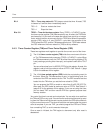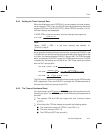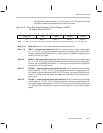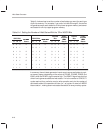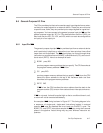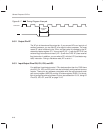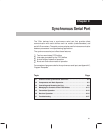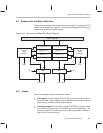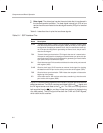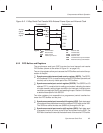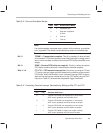
Overview of the Synchronous Serial Port
9-2
9.1 Overview of the Synchronous Serial Port
Both receive and transmit operations of the synchronous serial port have a
four-word-deep first-in, first-out (FIFO) buffer. The FIFO buffers reduce the
amount of CPU overhead inherent in servicing transmit or receive data by re-
ducing the number of transmit or receive interrupts that occur during a transfer.
In the internal clock mode, the maximum transmission rate for both transmit
and receive operations is the CPU clock rate divided by two, or
(CLKOUT1 rate)/2. Therefore, the maximum rate is 10 megabits/s for a
20-MHz (50-ns) device, 14.28 megabits/s for a 28.57-MHz (35-ns) device, and
20 megabits/s for a 40-MHz (25-ns) device. Since the serial port is fully static,
it also functions at arbitrarily low clocking frequencies.
Two modes of operation are provided to support a wide range of applications.
Continuous mode provides operation that requires only one frame synchro-
nization (frame sync) pulse to transmit several packets at maximum frequen-
cy. Burst mode allows transmission of a single 16-bit word following a frame
sync pulse. These two modes of operation suit most of the industry-standard
synchronous serial-data devices, such as codecs. This port is intended to pro-
vide a glueless interface to most of the standard codec parts. However, these
modes can also be adapted for specialized synchronous interfaces.



